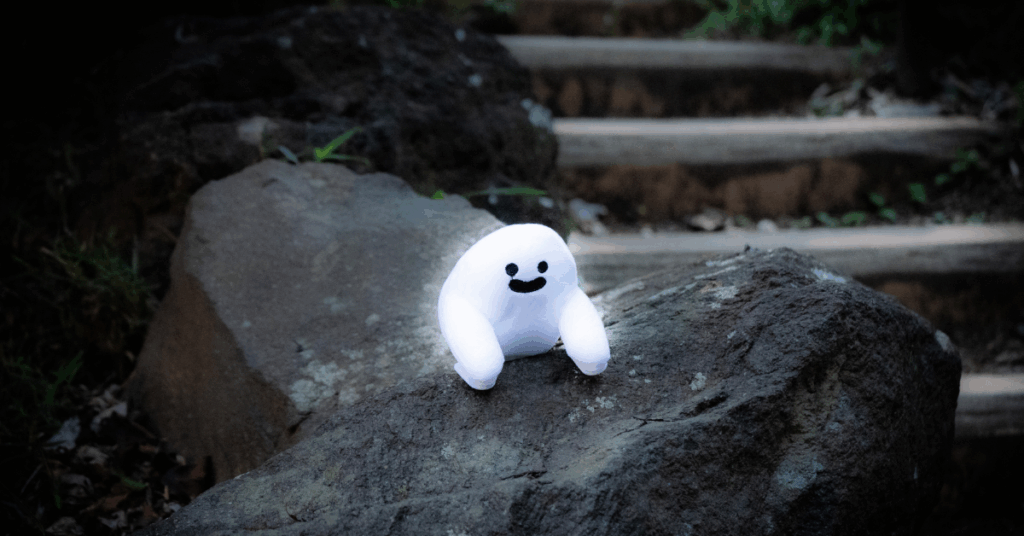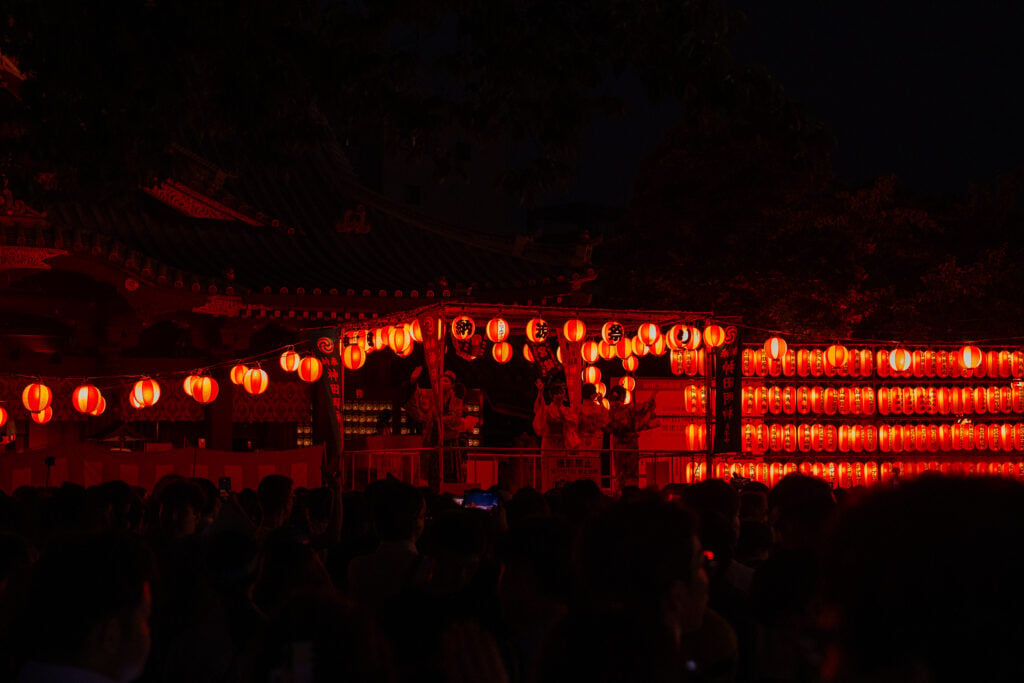Why Japan loves ghost stories
Japan is a land that is famous for its horror; its rich tradition of yūrei 幽霊 (ghosts) and yōkai 妖怪 (supernatural beings and monsters) make up the chilling backbone of Japanese folklore. These tales aren’t just meant to frighten — they reflect cultural beliefs shaped by Buddhism and Shinto, where ancestral spirits are honored but restless souls may linger as vengeful onryō 怨霊 (vengeful spirits).
Spanning centuries of folklore and modern legends, these tales remain as haunting and captivating as ever. And beyond the folklore, Japan is filled with real places said to be haunted, where history and tragedy keep the supernatural close at hand.
In this article, we’ll explore some of the most famous Japanese ghost stories alongside haunted locations you can actually visit. Whether you love folklore, are curious about Japan’s spooky side, or just enjoy a good scare, these tales offer a fascinating look at the country’s preternatural world.

Famous Japanese ghost stories
Every culture has ghost stories, but Japan’s stand out for their haunting mix of beauty and terror. At the heart of the country’s supernatural traditions, Japanese ghost stories reflect deep cultural beliefs about life, death, and the spirit world. From eerie encounters to tragic tales, these spooky stories continue to captivate audiences old and young and inspire new retellings today.
Yuki-onna: the snow woman
Snow can be quite beautiful — sparkling in the sun, a fresh coat lying upon a landscape — but it can also be deadly. Enter, the yuki-onna: a beautiful yet deadly yūrei who appears on snowy nights in a flowing white kimono. She is said to have an otherworldly beauty, with long black hair and dark, piercing eyes. Her skin is white as snow and ageless, but she is as cold as ice. Sometimes she helps, sometimes she harms. She is a representation of nature’s beauty and danger.
Different depictions of the yuki-onna vary throughout the regions of Japan, with older tales depicting her as harmful and newer ones giving her more grace and humanity. A classic Japanese ghost, she has inspired characters in anime like Nurarihyon no Mago and Natsume’s Book of Friends.
Otsuyu: the ghostly lover
The ghost story of Otsuyu falls away from the theme of most Japanese ghost stories because its focus is on one of love, rather than vengeance. Often known as “The Tale of the Peony Lantern,” it tells of a man who falls deeply in love with a mysterious woman who visits him each night, her way lit by a softly glowing (peony) lantern. What the lovestruck fool doesn’t realize is that Otsuyu is already dead, and his nightly encounters are with her spirit. Drawn in by beauty and desire, he continues the relationship until the truth is revealed, leading to his own tragic end.
The story of Otsuyu has captivated audiences for centuries, becoming a staple of kabuki theater and ghost literature. It’s often retold during the Obon festival, when the boundary between the living and the dead is said to grow thin. Its themes of love, loss, and the irresistible pull of the supernatural make it a timeless tale, inspiring adaptations in plays, films, and ghostly romance anime.
Yamamba: the mountain witch and modern feminist icon
In Japanese folklore, Yamamba is depicted as a formidable and mysterious figure — an elderly woman dwelling in the mountains, known for her dual nature of both benevolence and malevolence. Known as the old hags and witches of Japanese mountains and forest, these yamamba had their humanity corrupted and were transformed into cannibalistic monstrosities. The yamamba is often portrayed as a powerful yōkai, capable of both nurturing and terrifying those who encounter her.
In contemporary interpretations, Yamamba has emerged as a symbol of female empowerment and resistance against patriarchal norms. Scholars and artists have reimagined her as a feminist icon, emphasizing her autonomy, strength, and defiance of societal expectations. By embracing her role as an outsider and challenging traditional gender roles, Yamamba embodies the liberation and agency of women, inspiring modern narratives that celebrate her as a powerful and independent figure.

Hanako-san: the school bathroom ghost
Every school has its scary stories, but in Japan, one of the most famous is Hanako-san. According to the legend, she haunts the bathrooms of schools, most often the third stall on the third floor. Children whisper that if you knock three times and call out her name, Hanako-san might answer back — or even appear. Equal parts spooky and playful, her story has become a favorite among schoolchildren, who sometimes dare each other to summon her as a test of courage.
Hanako-san remains one of the best-known Japanese urban legends, thanks in part to her presence in pop culture. She has appeared in manga, anime, and horror films, often blending the innocence of a little girl with the eeriness of a ghost. Most famously, she is the inspiration behind the hit manga and anime Toilet-Bound Hanako-kun, which reimagines her as a mischievous but endearing male character. This ability to shift between frights and fun is part of what makes Hanako-san such a popular figure in Japanese ghostlore.
Kuchisake-onna: the creepy slit-mouthed woman
One of Japan’s most unsettling urban legends is that of Kuchisake-onna, the “Slit-Mouthed Woman.” She is said to appear wearing a surgical mask, approaching unsuspecting passersby — often children — at night. In a quiet, sinister voice, she asks, “Am I pretty?” If you answer no, she kills you on the spot. If you answer yes, she removes her mask to reveal her mouth slit ear to ear, then asks again. Answer yes, and she slashes you to look like her; answer no, and she kills you. The legend first spread widely in the late 1970s, sparking real-life panic among schoolchildren.
But like many ghost stories, there are ways said to escape her deadly trap. Some versions claim you can confuse her by giving vague answers such as “you’re average,” buying yourself enough time to flee. Others suggest distracting her by offering candy or money, which momentarily satisfies her and gives you the chance to get away. Kuchisake-onna has appeared in numerous films, manga, and urban legend retellings, cementing her place as one of Japan’s creepiest and most iconic supernatural figures.
Haunted places in Japan you can visit
Just as Japan’s ghost stories blur the line between the living and the dead, its haunted places bring those legends into the real world. Anything could be haunted — be it tunnels and forests to parks and even shopping centers, these locations are said to echo with restless spirits and hair-raising encounters. Whether born from tragedy, folklore, or rumor, they’ve become some of the country’s most infamous supernatural spots.
Kiyotaki Tunnel: Kyoto’s most haunted tunnel
Hidden in the mountains near Kyoto, the Kiyotaki Tunnel has long been considered one of Japan’s most haunted sites. Built in 1927, it has a dark history tied to forced labor and countless accidents over the years. Drivers and pedestrians alike report strange phenomena when passing through, from sudden drops in temperature to the overwhelming sense of being watched. Some even claim that spirits appear in the tunnel itself, lingering as reminders of its troubled past.
What makes Kiyotaki especially scary is the legend of its cursed mirrors. According to the tale, if you see your reflection distorted while walking through at night, it means misfortune — or even death — is coming. The tunnel has become a favorite subject for ghost hunters and paranormal YouTube channels, establishing its reputation as a must-visit spot for fans of the supernatural.
Sunshine City in Tokyo: haunted shopping in Tokyo
In the heart of Ikebukuro stands Sunshine 60, the skyscraper centerpiece of the Sunshine City shopping and entertainment complex. When it opened in 1978, it was the tallest building in Asia and quickly became a symbol of Tokyo’s modernization. But beneath its bright lights and bustling crowds lies a darker history: the site once held the notorious Sugamo Prison, where many political prisoners — and even war criminals — were executed during the postwar years. That grim past has fueled rumors that spirits still linger in the area.
Over the years, visitors have reported eerie chills, unsettling reflections in windows, and the feeling of being watched while wandering the complex. Urban legend blogs and Tokyo ghost tours often highlight Sunshine City as one of the capital’s most unusual haunted spots, where everyday shopping collides with distressing whispers of the past. Despite its modern face, the tower’s history ensures that Sunshine 60 remains as much a place of legend as it is of leisure.

Toyama Park: Tokyo’s wartime ghost spot
Toyama Park, located in Tokyo, is more than just a place to relax — it carries a dark history that has made it a hotspot for the supernatural. During wartime, parts of the park were used for military medical experiments, leaving behind stories of suffering and tragedy. Even today, it is said that the restless spirits of those who died still linger, their presence felt by those who wander the park, especially after dark.
The park’s haunted reputation is connected to Unit 731, the infamous Japanese military unit known for conducting human experimentation on men, women, and children during World War II. While the park itself was not a primary site for all Unit 731 activities, it was part of the network of facilities used for wartime research and became a large dumping ground for the bodies. Local legends suggest that the pain and suffering endured by the victims left lingering spiritual traces, contributing to the disturbing atmosphere that surrounds Toyama Park today.
Visitors and ghost hunters frequently report unusual lights, sudden chills, and strange noises after sunset, experiences that have cemented the park’s reputation as one of Tokyo’s most haunted locations. Japanese paranormal TV shows and urban legend blogs often feature Toyama Park, highlighting how its peaceful daytime appearance contrasts sharply with the dark and tragic history that continues to prompt tales of the supernatural.
The numbers vary, but an estimated 14,000 men, women, and children were killed by this unit after being brutally and inhumanely treated. Please remember to be respectful to the spirits of these victims if you decide to visit the park.
Exploring Japan’s supernatural side
Japan’s ghost stories and haunted places offer more than just scares — they reflect a culture that blends respect, fear, and fascination with the unknown. From centuries-old folklore to urban legends and real-life haunted locations, these tales provide a unique window into Japanese beliefs about life, death, and the spirit world.
Visitors can experience these stories through literature, theater, anime, and carefully exploring the locations themselves, discovering firsthand how history, tragedy, and imagination intertwine. Whether you’re a fan of the supernatural or simply curious, Japan’s spooky and mysterious side adds another unforgettable layer to studying, traveling, or simply exploring the country.
Traveling or studying abroad in Japan isn’t just about temples, sushi, or bustling cities — it’s also about stepping into a world where the mysterious and the supernatural are very much alive. Ready to start your journey in Japan? Check out our blog for more information or contact us with any questions you may have!
Interested in more Japanese supernatural stories? Our yōkai blog dives into the creatures of Japanese legends.




